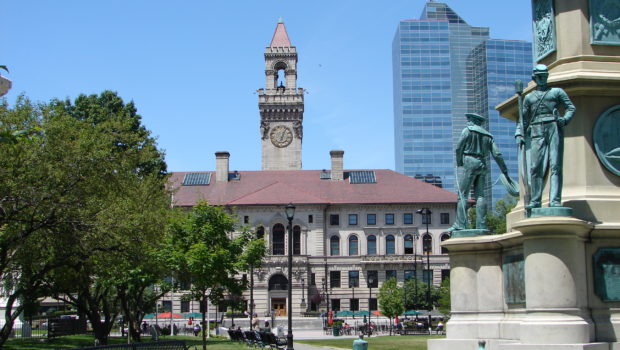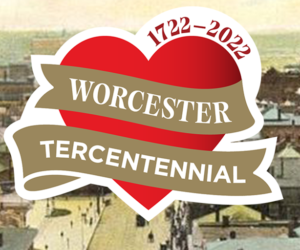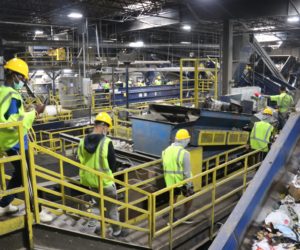With clear solutions developed, competition growing, and a negative trend of manufacturing businesses leaving the city, the Worcester Regional Chamber of Commerce is sounding the alarm for city councilors to gradually transition to a single tax rate.
Worcester currently has a dual tax system dating back to 1984, which charges businesses and residents different property tax rates. Since the split, the city’s commercial/industrial tax rate has become among the highest in the state, according to Massachusetts Department of Revenue records. Worcester’s adopted tax rates for Fiscal Year 2019 were $18 per $1,000 of assessed value for residential dwellers compared to $34.90 per $1,000 for commercial/industrial properties – the highest in Central Massachusetts and Worcester County.
Of 351, just 116 cities and towns in Massachusetts utilize a dual tax rate, per 2019 state data.
According to Chamber research, over fiscal years 2015, 2016, 2017, and 2018 a majority of Worcester city councilors voted to increase the total tax bills on commercial/industrial property owners during the same four-year period.
The second-largest city in New England, Worcester’s commercial/industrial tax rate is currently double that of at least seven neighboring towns – many of which boast pad-ready sites.
“If you want to attract commercial/industrial investment, you have to be competitive,” said Chamber President & CEO Timothy P. Murray. “It’s particularly important to manufacturing because they take up a good amount of land and are also taxed on their equipment. When you have a manufacturer that has an older facility and they want to upgrade, the assessment will go up so they have to factor that into their pro forma.”
Mr. Murray said those communities are growing wise to Worcester’s tax stalemate. Several Central Massachusetts towns and cities that had previously opted for dual tax rates are now transitioning to single rates. In a nearly unanimous 2018 vote, the Fitchburg City Council voted to transition to a single rate over 10 years. Webster previously operated on a dual rate before opting for the reverse. Yet, similar to Worcester, Clinton and Auburn remain on dual rates. However, select boards in those towns have voted to and begun the process of gradually moving to a single rate.
DUAL TAX RATE CAUSES EXITS
The dual tax rate is a factor in companies choosing whether to stay in Worcester or leave. Several recent departures underscore Mr. Murray’s long-held concern.
When Primetals Technologies Ltd. wanted to expand in Worcester after more than 100 years in the city, there were scant pre-permitted pad-ready sites. Primetals, and its 325 jobs, departed for Sutton in 2018 and a renovated 183,000-square-foot site at $16.52 per $1,000 assessed tax rate. An added bonus, the firm received a tax increment financing deal – an argument often used by Worcester city council for reasons businesses locate here.
Commercial owner retention has suffered in Worcester. In the last few years alone, Curtis Industries moved from Higgins Industrial Park in Worcester to West Boylston along with Cogmedix, both taking hundreds of jobs as a result of their need to expand to newer, more modern space.
One of the main reasons for the lack of pad-ready sites, said Mr. Murray, is that some Worcester property owners refuse to reinvest in parcels because there’s no incentive to do so without a signed lease in hand thanks to Worcester’s high commercial tax rate. For example, the long-dormant former U.S. Steel site at 150 Blackstone Rd. was eventually redeveloped by GFI Partners. However, renovations of the 632,000-square-foot facility only occurred after anchor tenants were secured and Worcester gave a tax increment financing plan, or TIF.
In attracting those firms, GFI offered new tenants, such as Imperial Distributors, a lease including relocation of 300 employees from Auburn in spring 2017, as well as a tax increment financing deal.
“It’s a two-headed monster,” said Mr. Murray. “U.S. Steel was an exception rather than the rule. The dual tax rate is antithetical to growing your commercial and industrial tax base. It impedes growth and particularly hurts manufacturing and research and development companies.”
John Killam, president and CEO of the Massachusetts Manufacturing Extension Partnership, said the loss of not only companies but also manufacturing jobs from Worcester deeply impacts the middle sector of the economy as many other hidden service-oriented firms lose contracts and work as the result of a relocating client.
“We’re missing the economic impact these manufacturers make within the community. For every manufacturing job in a community, two to three other non-related jobs in the economic ecosystem are created,” said Mr. Killam listing restaurants “even taxi cabs.”
Calling the industry and “economic generator,” he added: “When we hear arguments over the dual tax rate, we’re not capturing the other jobs that will be affected [and] aren’t directly associated with that relocating company.”
SOLUTIONS ABOUND
A March 2017 Worcester Regional Research Bureau report found setting city tax rates is often “not a fact-based policy decision.” The report calls for development of criteria and a strategic approach that would encourage the city council to put forth its own rate proposals.
While working to mitigate financial challenges during the transition to a single rate, the Bureau’s white paper offered two strategies with a basic formula tracking changes in both residential and commercial/industrial rates. The first idea explores setting a pre-determined transitional period to a single rate while the second “buffers” residential payers by freezing current commercial/industrial property contributions. As a safety measure, both proposals emphasize the potential for city councilors to slow or increase the transition based on annual economic indicators.
Certified Enrolled Agent Gary M. Gaffin; owner of Gary M. Gaffin Accounting, Inc., a 21-year-old accounting practice on Park Avenue, believes city councilors’ continuous renewal of the dual tax rate is not only unfair to larger employers, but also small businesses like his who employ micro staffs and are the backbone of the city’s economy.
In particular, Mr. Gaffin strongly argued against his own District 5 Worcester City Councilor Gary Rosen’s point that a single tax rate would adversely affect the elderly living on fixed incomes.
“My office manager is 83 years old and by raising my taxes, I can’t afford to give her a raise,” he said, adding that state employee health care cost increases combined with the city’s ongoing tax rate hikes can mean the difference in hiring a full-time employee or a temporary worker.
Mr. Gaffin pays roughly $1,600 per quarter in commercial/industrial taxes and has heavily invested in renovating his building, which he believes attracts more business and consumers to Park Avenue.
Mr. Murray agreed, adding that the Chamber’s public advocacy on this issue has largely been unsuccessful over recent years.
“We’ve gone backwards,” he said. “With the makeup of this council … we can see their votes have been a factor in many of these exits.”






